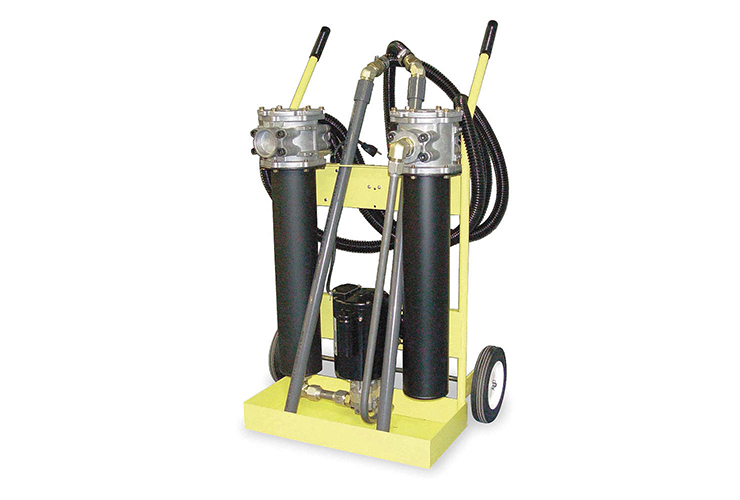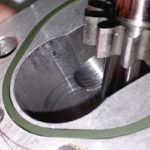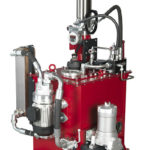By Josh Cosford, Contributing Editor
It was 20° here in Burlington, Ontario yesterday. No, not 20° Fahrenheit, but 20° Celsius … equating to something like 68° F. Nevertheless, it was warm enough to have our entire family outside playing basketball in the driveway. Because of the weather and the lack of human gatherings, I’m seeing a number of walkers, runners and bikers in orders of magnitude more than usual as everyone gets out to shake off some cabin fever.
On any other (non-pandemic) day, passersby just mosey on by without a second thought. But we have five kids. Because of the social distancing expected by every respectable citizen, it seems everyone is quick to judge others not taking their responsibility seriously. I could sense the burning stares of walkers who gave our hooping posse a wide berth and walked past on the road. Surely nobody has five kids anymore and we had invited friends over for an afternoon of basketball.
As the weather warms with the advancement of spring, I hope we experience seasonal renewal in more ways than green growth and warm weather. Some things are not in our control (or it seems as of this writing), but many other things are. What we can definitely control is our spring maintenance routine, and I apologize for the horrible segue. In that light, here are my Top 5 Spring Maintenance Tasks.
1. Have your oil sampled and tested. An oil sample test tells you the quality of your fluid conditioning program and if efforts to reduce particle and water contamination are effective. You can purchase basic kits to sample particle contamination and provide you an ISO 4406 contamination level of your 4-, 6- and 14-micron particles. Most kits offer results for water contamination level as well, and you may be surprised at how much water is held in saturation without any visual signs.
If you spring for the high-end tests, you are given a bigger picture to hydraulic fluid health. You will discover the composition of particles (to see if bronze wear particles are accelerating, for example), TAN (to check for oxidation) and even viscosity index (letting you know how well your oil performs over a wide temperature range).

2. If Tip 1 comes back with bad news, purchase or rent a portable filtration system to kick fluid quality up a notch. A filter cart with very fine micron rating will clean your hydraulic system and help remove fine particles not trapped by the machine’s permanently installed filters. Some portable filtration systems work while the machine is running production, so downtime isn’t even a requirement.
Fine particles tend to behave like a lapping compound, removing even more particles and exacerbating your contamination problem. If you run nominally rated filtration (shame on you), perhaps its time to permanently install one of these offline filtration systems to maintain fluid health at optimal levels.
3. Clean out your reservoir. This task not only removes a year’s worth of sludge at the bottom of the tank, but provides a diagnostic opportunity as well. Perhaps a normally unseen layer of water resides below the lighter oil above. Additionally, when a tank is empty, you have a chance to inspect the quality and quantity of the contamination settling throughout the year. If bronze particles are sparkling in the corners of the tank, it’s a sign of advanced wear of pumps or other components.
Even if you find your reservoir relatively free from particle and water contamination, just the act of emptying the reservoir by way of the filter cart guarantees you’ve completed Task 2, above.
4. Inventory your spare components and stock up if needed. This task is for larger, high volume manufacturers who run multiple shifts and high duty cycle machinery. The rate of spare part throughput can often be high, and it may be unknown if spares are out for repair, are on order or even scrapped altogether.
By checking what you have, what’s out for repair and what’s on order, you’ll be sure to be prepared for your next failure. Sometimes it helps to work with your local fluid power distributor, who knows your hydraulic components better than you do. A valve may have multiple versions that are interchangeable even with differing part number codes. Your distributor can help you avoid expensive duplication of spares when two valves are the same except for their revision number.
5. Upgrade your filtration. If you only ever used premium quality, low micron, high efficiency filters with high dirt holding capacity, most of the other tasks on this list would be obsolete. Start by filtering where you should be; in the return line, in the pressure line and through an offline filtration systems.
High quality filtration is, and always will be, the best food for a healthy hydraulic system. A 3-micron filter with a beta ratio at least 1,000 will trap enough particles to prevent the lapping compound effect I mention earlier. It’s been proven that expensive filtration systems actually require less frequent changing and reduce cost over time.






Leave a Reply